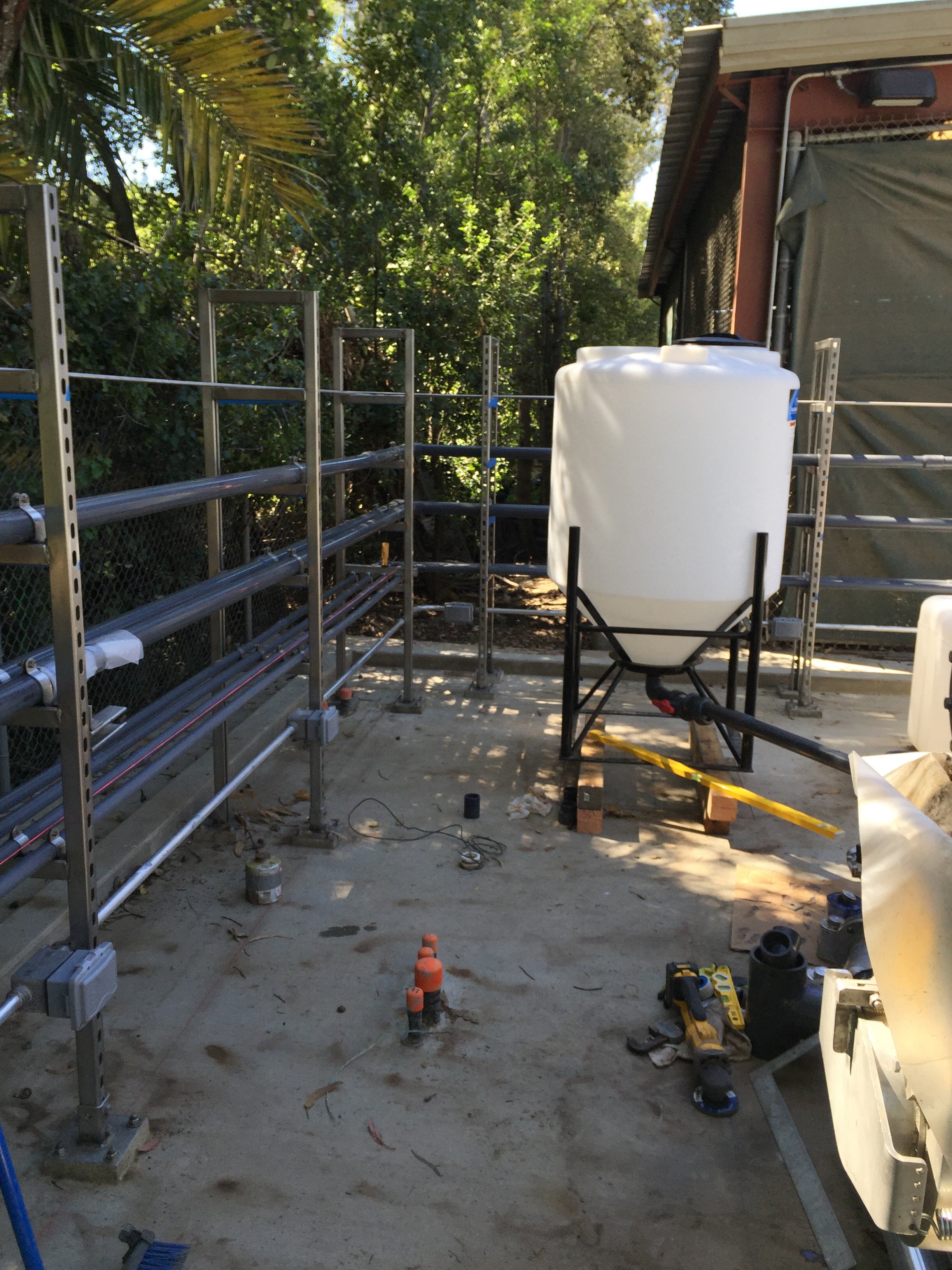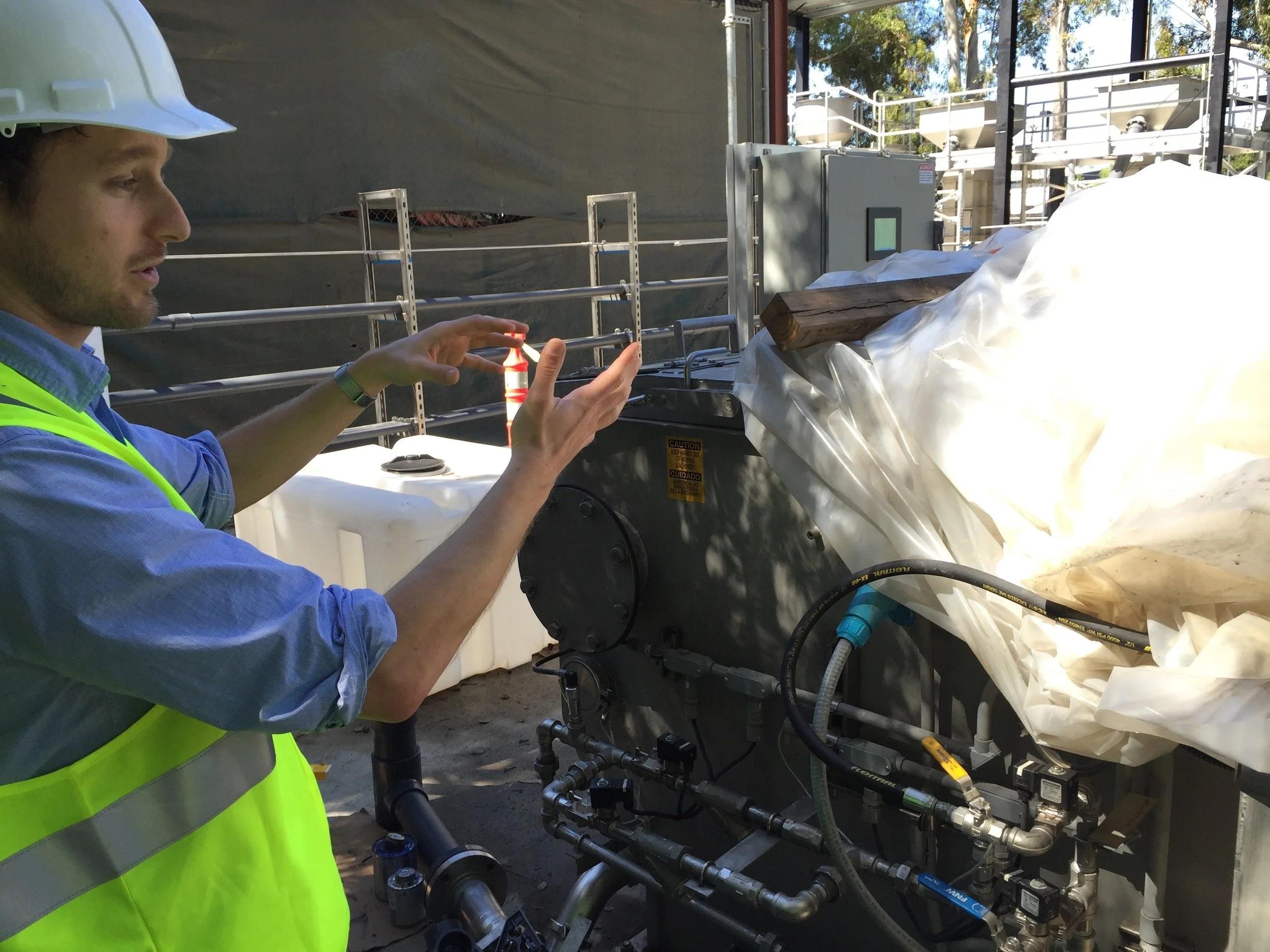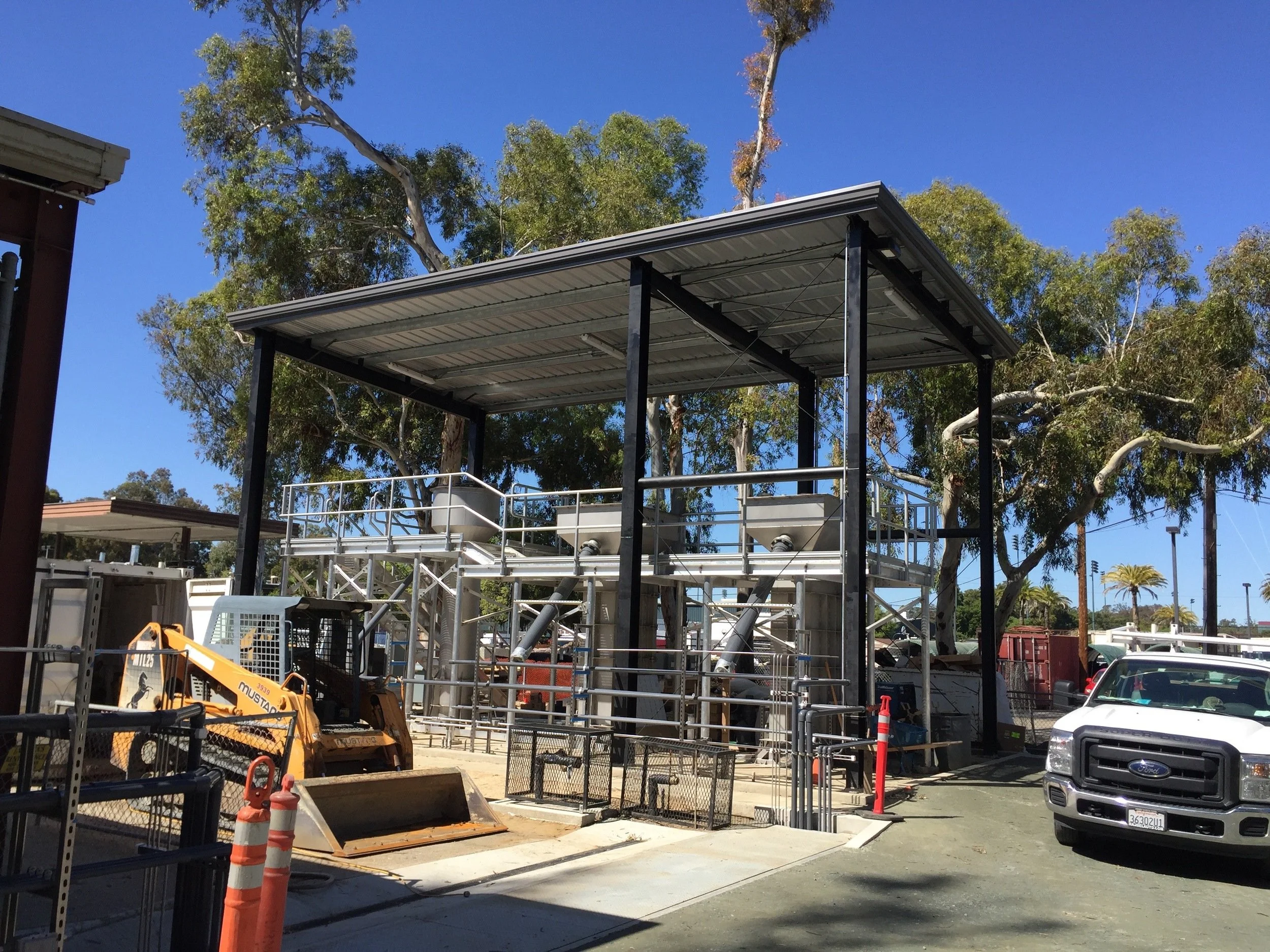Water Reuse Innovation at Stanford's CR2C
Codiga Resource Recovery Center at Stanford University
The water system in the U.S. and in California was designed with an assumption of abundance. As climate change progresses, the amount and distribution of water is changing, while California's population is growing. In addition, the U.S. federal government made a massive investment in water treatment infrastructure during the 1970's as a consequence of the Clean Water Act. That infrastructure is past its useful life and needs to be replaced.
It is time for a new paradigm for managing water on a more local scale with new technology that includes sensors and other smart capabilities and solutions that use less energy and harvest the ingredients in waste water, viewing wastewater as a set of assets to be captured rather than a problem to be treated and disposed.
The Codiga Resource Recovery Center (CR2C) at Stanford University was created to research and test innovative methods for extracting the constituents of wastewater into separate asset streams. It will test “promising technologies for the recovery of resources (clean water, nutrients, energy, renewable materials) from wastes. Registered as a Level 4 Testbed Facility (WERF National Water Resource Recovery Facility Test Bed Network and Directory), the CR2C will help researchers and entrepreneurs from Stanford, around the US and throughout the world, identify systems with commercial potential and provide the testing and validation that will allow them to cross the innovation “valley of death” (from the lab to commercialization).”
The Minerva Ventures team got an early peek at this innovative center. Here are highlights of what we learned:
The CR2C is set up to bring in and treat several types of water. The facility will have 4 bays each capable of providing up to 30 liters per minute from 4 water sources (raw sewage, micro-screened sewage, secondary effluent and non-potable lake water). The waste flows are treated in stages. The end result is clean water for reuse.
Stage 1) Grit removal (gets the sand, etc. out)
CR2C Director of Operations, Dr. Sebastien Tilmans shows how it works.
Stage 2) Primary treatment process uses a micro-screen to remove solids from the water and dewater them to up to 50% solids. The machine is currently configured to send the solids in a slurry back to the sewer.
The goal to build energy and materials processing plant (for example, the chemical engineering industry is interested in using methane as a building block for new green chemicals and materials, including biodegradable plastic). Mango Materials is a company that is advancing this technology.
Traditionally, the wastewater treatment system would next remove dissolved organic materials, traditionally by adding aerobic bacteria to remove it. That creates CO2 and biomass. It takes lots of energy to add oxygen into water, then you have to haul the biomass away. In addition, it has become a big PR problem to manage bio solids.
Instead, the CR2C uses an anaerobic process to treat organic matter. Organisms consume the organic material and produce methane gas, which can be harvested. ANAEROBIC organisms grow slowly at low temperatures, and need to be retained for long periods. A team of researchers in South Korea, including Stanford Professor Emeritus Perry McCarty, developed a system that solves these challenges, the SAF-MBR. the staged anaerobic fluidized bed membrane bioreactor.
Stage 3) The wastewater flows through a bed of granular activated carbon, which is fluidized. The carbon stays in the reactor, providing a matrix on which biofilms of the anaerobic organisms attach. The organisms are retained on the order of 100 days, while water flows through the reactor in less than 7 hours. Because of this short hydraulic retention time, the required volume of the reactor is quite small
Stage 4) Ultrafiltration membranes exclude particles larger than 0.04 µm from flowing through.
Stage 5) Solids are periodically purged from the recirculation line. Conventional wastewater treatment plants consume 0.5 kWh per cubic meter of wastewater treated. The SAF-MBR could instead produce 0.25 kWh per cubic meter of wastewater treated while cutting solids production to 1/2 or 1/3 of conventional systems.
Stage 6) The pipe racks convey 3 grades of wastewater and surface water from Stanford’s non-potable lake water system (this water comes from Searsville and Felt lakes). Can be tested with different final treatment processes.
Storing water for testing makes the process expensive. Detection could be reduced from 24 to 2 hours. Effluent can go to Palo Alto Regional Water Quality Control Plant (aka regional wastewater treatment plant). CR2C also has an area for testing new sensors and monitoring technologies. Improved, reliable monitoring tools are critical to facilitate the wider deployment of water recycling systems.
It will be exciting to see this facility in action. They will be able to run tests on a variety of types of equipment for apples to apples comparisons.
(Any mistakes in this blog are the author's not the CR2C.)




